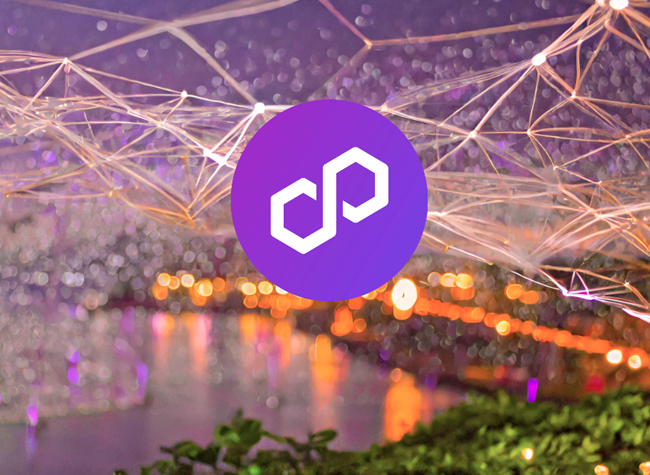By leveraging "sidechains" that run adjacent to Ethereum, Polygon offers compatibility with Ethereum's ecosystem while bypassing congestion on the root chain.
The native token facilitating the Polygon network is MATIC. Beyond operating as a cryptocurrency, MATIC handles governance, staking, and payment fees at a fractional penny per transaction. This enables unprecedented scalability for decentralized apps (dApps) as Ethereum itself remains hindered by bottlenecks.
Below we explore Polygon and MATIC more deeply - from origins to technical architecture to adoption trajectory. As Ethereum strives toward a web-scale platform for decentralized finance and Web 3.0, Polygon plays a pivotal role realizing this vision.
History and Development of Polygon
Originally founded as the Matic Network in 2017, the project rebranded to Polygon in February 2021. The founding team of Jaynti Kanani, Sandeep Nailwal and Anurag Arjun drew inspiration from existing blockchain scaling solutions like Plasma sidechains and proof-of-stake consensus.
After launching their testnet and mainnet in 2020, the project started gaining serious traction. Polygon has raised over $450 million from notable backers like Mark Cuban. And the protocol has onboarded major partnerships with crypto-native brands like decentralized exchange Uniswap in addition to mainstream players like metaverse platform Decentraland, payments provider Stripe and game maker Ubisoft.
How Polygon and the MATIC Token Work
Under the hood, Polygon combines multiple scaling approaches:
- Proof-of-Stake Sidechains - independent companion blockchains using proof-of-stake for consensus instead of Ethereum's electricity-intensive proof-of-work.
- Plasma Chains - separate child blockchains using fraud proofs to provide added security assurance when bridged back to the Ethereum mainchain.
- Zero-Knowledge Rollups - batch transactions and generate cryptographic proofs to verify validity off-chain, with data periodically posted to Ethereum.
This hybrid framework lets Polygon act as a parallel decentralized "Layer 2" on which tokens and contracts function just like they would on Ethereum itself. By offering interoperability, Polygon unlocks vastly greater performance without compromising security or decentralization for Ethereum-native offerings.
For consensus and governance, Polygon uses a Proof-of-Stake blockchain secured by MATIC token holders. MATIC also pays "gas" fees at a fraction of a penny for using services on the network, whether transacting on a Polygon-based decentralized exchange or liquidity providing in a lending protocol.
MATIC Token Utilities and Staking
As the native asset powering Polygon architecture, MATIC possesses associated utility:
Transaction Fees - MATIC funds fee payments for minting non-fungible tokens, swapping tokens or interacting with dApps. This maintains negligible costs despite surging usage.
Staking / Validation - MATIC stakers validate transactions, produce blocks and uphold consensus as validators. In exchange they earn MATIC proportional to their contribution.
Governance - MATIC token holders influence protocol changes like development funding allocations or security parameters adjustments.
Delegation - Smaller holders can delegate or "lend" MATIC to validators to partake in staking returns for securing the network minus a cut kept by operators.
This formulated incentive structure engages the community while funding ongoing advancement.
Current Polygon Ecosystem Features
By early 2023, Polygon facilitates well over 100 million monthly transactions, making it Ethereum's most popular layer 2. This demand continues expanding thanks to integration from major protocols including decentralized exchanges (Uniswap, Sushiswap, Aave etc), fiat onramps (Transak), NFT brands (Opensea, Dolce & Gabbana) and blockchain games (Decentraland, Sandbox).
These collaborations enable Polygon to drive innovation across domains like decentralized finance and Web 3.0. Users enjoy low-cost trading, lending, portfolio management and collectible marketplaces harnessing Ethereum's strengths without its limitations.
Developer support for Polygon is also unmatched among layer 2 solutions thanks to robust documentation, APIs, software development kits and incubator programs - key indicators of technical staying power.
Future Outlook and Roadmap
Looking ahead, improvement plans focus on capability enhancements like scaling transaction speeds towards hundreds of thousands per second - matching leading payment providers like Visa. Early-2023 brings expected integration of private transactions and zero-knowledge proofs for confidentiality.
On the infrastructure front, Polygon pursues an "internet of blockchains" vision uniting external chains via standardized middleware. This bars to entry aim to accelerate mainstream adoption.
Having already established itself as the interface for onboarding millions onto Ethereum amid the Web 3.0 revolution, Polygon remains positioned at the epicenter of disruption as the world transitions to decentralized consensus platforms.
Conclusion
Since inception, Polygon's purpose has targeted a necessary gap limiting blockchain's real-world viability - lack of scalability. By merging Ethereum's security with expanded throughput, the now simply dubbed "Polygon" ushers the technological foundations for Web 3 into pragmatism.
The native MATIC token cements incentive alignment across stakeholders necessary for proper governance. And continual high-profile partnerships underscore Polygon'sindustry traction as the go-to outlet for experiencing decentralized apps before mass migration to Ethereum itself someday materializes. For the millions already flocking to Web 3 through venues like Polygon-powered NFT marketplaces or trading platforms, that future feels comfortably within reach thanks to such foundational layer 2 infrastructure now firmly laid.

